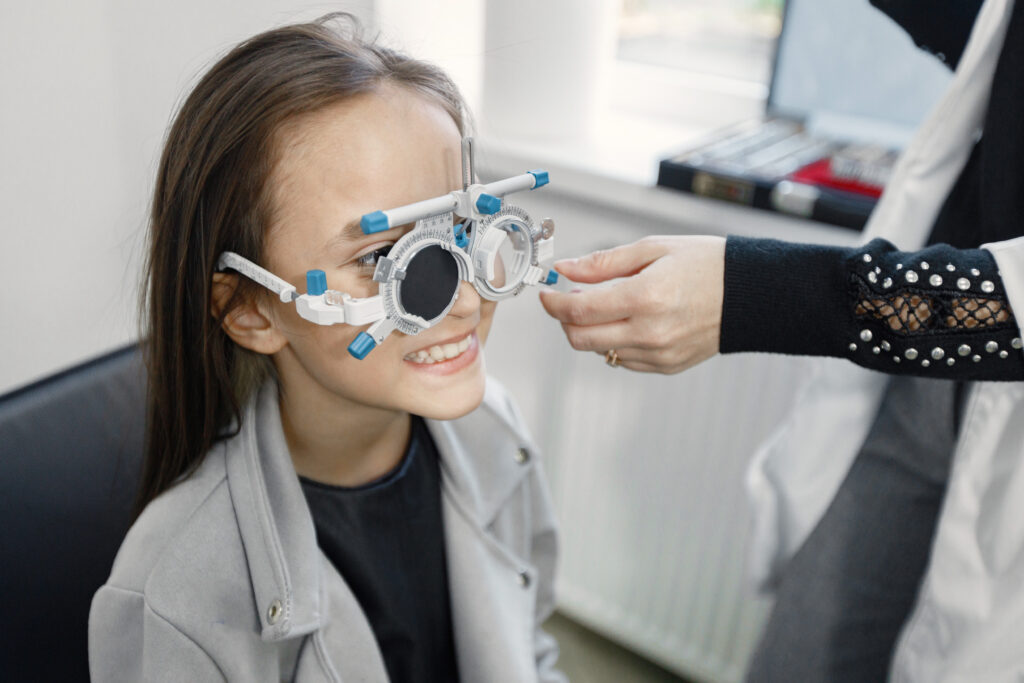- Squint: Narrowing or partially shutting one's eyes to improve vision or lessen glare.
- If you look at it like a detective, clues will become clear.
- Squint your eyes and see the world through a different lens
Squint, also known as strabismus, is a common condition in which the eyes do not align properly.
What is Squint?
Squint is a condition in which one or both the eyes point in different directions. The condition can be constant or intermittent, and it can affect one or both eyes. Squint can occur at any age, but it is most commonly seen in infants and young children.

Causes:
There can be one or more reasons for any squint to occur in an individual. These includes:
- Uncorrected refractive error
- Weakness in eye muscles
- Abnormality of nerves in the eye
- Brain related disorder such as seizure disorder, raised intracranial pressure or cerebral palsy.
Premature babies or babies born with low birth weight have high chance of developing squint as they grow up.

Symptoms
The most obvious symptom of squint is misaligned eyes. Other symptoms may include:
1. Double vision
2. Difficulty with depth perception
3. Eye strain or headaches
4. Squinting or closing one eye to see better

Diagnosis:
Squint can be diagnosed through a comprehensive eye examination by a Squint specialist or a strabismologist.
The doctor will examine the eyes and test for visual acuity and eye alignment.
They may also perform tests to check for any underlying conditions that may be contributing to the squint, such as a refractive error or cataracts.

Treatment:
The treatment for squint depends on the underlying cause and the severity of the condition. In some cases, the squint may improve on its own without treatment. In other cases, treatment options may include:
- Any underlying cause or disorder leading to squint will be treated first.
- Correction of uncorrected refractive error with glasses or contact lens.
- Specialised eye exercises to strengthen the eye muscles and improve eye alignment.
- Specialised computer exercise to strengthen function of eye.
- Specialised glasses like prism
- Surgery: In more severe cases, surgery may be necessary to realign the eyes. The surgery involves adjusting the position of the eye muscles to improve eye alignment.

Prevention:
While it is not always possible to prevent squint, there are some steps that can be taken to reduce the risk of the condition. These include:
1. Regular eye exams: Regular eye exams can help detect any underlying eye problems that may contribute to the development of squint.
2. Early treatment: Early treatment of any underlying eye problems can help prevent the development of squint.
3. Protecting the eyes: Protecting the eyes from injury and avoiding eye strain can help reduce the risk of developing squint.

In conclusion, squint is a common condition that can affect people of all ages. While it can be a cosmetic concern, it can also lead to vision problems if left untreated. If you or your child are experiencing any symptoms of squint, it is important to consult with a squint specialist as soon as possible. Early diagnosis and treatment can help prevent the condition from progressing and improve the chances of successful treatment.
Recent Post
Choose the Right Pediatric Eye Doctor in Thane
Parents prioritize their children’s health, including eye health. From blurry vision in the classroom to a precursory stage of eye conditions,…
Cataract Surgery in Thane with Advanced Laser Tech
Vision is one of the greatest gifts life has given us. This priceless gift may start to wane in our prime,…
Best LASIK Eye Surgery to Ditch Your Glasses Forever
The world that is so much in demand for clarity of vision and purpose considers freedom from glasses or contact lenses…




